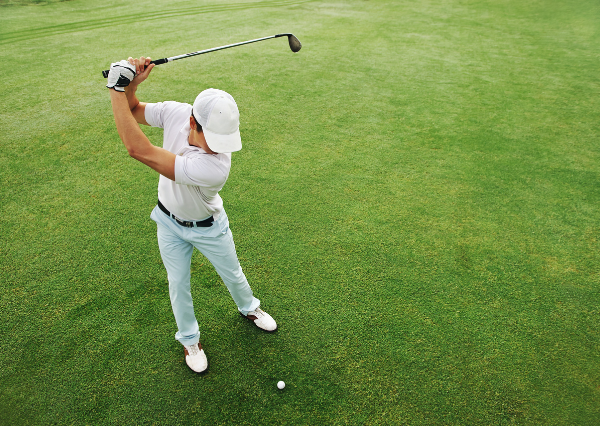The Power of Golf (Testing for Power)
By Mark Pajich
Ask any golfer if they need more distance and they will nearly always say yes. Achieving this without injuring yourself can be a lot more difficult. Today, if you google how to improve power for golf, you will see everything from swing harder, to activate your core more to lift more weights in the gym. While all these may be true in some form, how do you decide what areas need work so you can achieve the goal of more distance?
Answer? Test, test, test.
There are four (4) main tests that TPI conducts to check for any power leaks in your game and all 4 can be done at home if you have the space.
Vertical Jump measures your leg and core power.
Seated Chest Pass measures your push power.
Sit-Up and Throw measures your core and pull power.
Baseline Shot measures total body power.
Vertical Jump Test
This is a great test for lower body explosive power. If you cannot generate lower body power, your ball is not going to go far. An excellent result is 22” (56cm) for men and 20” (50cm) for ladies.
Simply stand next to a wall and mark your starting point. Then jump as high as you can and measure the difference.
Seated Chest Pass
This test checks for upper body power in the chest and triceps. You will need a chair and a medicine ball which is 5% of your body weight. So, you will need a 5kg ball if you weigh 100kg or a 3kg ball if you weigh 60kg etc.
Sit tall with your back against the back rest of the chair and your feet firmly on the ground. Using the correct weighted medicine ball and from your chest, throw the ball as far as you can without your back coming off the back rest of the chair.
An excellent result is 22 feet (6.7m) for men and 20 feet (6.1m) for ladies.
Sit-up and Throw Test
This test checks for abdominal and lat power.
Lie supine with your knees bent and your feet flat on the ground. With the same weighted ball on the ground behind your head, throw the ball as far as you can while you are trying to sit up and without your heels coming off the ground.
An excellent result is 22 feet (6.7m) for men and 20 feet (6.1m) for ladies.
Note: If you have a spine, hip, neck or shoulder injury or limitation you may find this test difficult, if not impossible in which case it is best to avoid this test.
Baseline Shot Test
The 4th and final power test measure overall body power. A powerful golfer needs to be able to generate energy from the ground, transfer it through their body and deliver it to their arms. A powerful golfer also needs to be able to do this both right-handed and left-handed.
An excellent result is 33 feet (10m) for men and 30 feet (9.1m) for ladies.
Standing in a shot putt position with both hands on the ball, squat, rotate, and throw the medicine ball double-handed, as far as possible. Start with your dominant side then with your non-dominant side.
How did you go?
If you managed to achieve excellent results in each test, then you are on par with the PGA and LPGA averages. If not, then you are in the majority with the rest of us and you have power leaks in your game.
Power leaks can be caused by any number of possibilities; lack of strength, speed, agility, mobility, flexibility, coordination, incorrect technique or equipment, or a pre-existing injury or limitation, just to name a few. Knowing you have a power leak is a start.
Next article we will look at strength and see if part of the reason for a power leak is due to a lack of strength.
For more information on golf-specific fitness programs please contact us at 012-334-1511 or send us an enquiry here.

